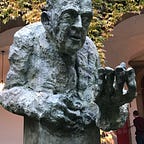Bodyweight Basics Part 1: The Squat
An Essential Movement Everyone Should Be Able To Perform
As I have written about before, the squat is one of the pillars of any quality resistance training routine. Today we’re going to take a deeper dive into bodyweight squatting and look at a couple of variations to increase the intensity. Check the video below for examples of each version.
The Basic Squat
Start with your feet at least shoulder-width apart, with the toes slightly pointed out. It’s better to have your feet too wide than too narrow while squatting, a wider stance opens the hips which allows you to lower down to a position where your butt is parallel to the floor. Lower down at a controlled pace by pushing your hips back then bending the knees. Stand up by driving your whole foot straight down on the floor, don’t let your weight shift forward or backward, imagine yourself lowering straight down and coming straight back up. It’s also important to keep your knees pressed out throughout the entire movement. This engages the adductor muscles of your inner thigh, which assist the quads and glutes in pushing you back up to a standing position.
One And A Half Squat
This version of a squat simply increases the time under tension the muscles experience while performing the movement. Increasing the time under tension is a great method to use for any bodyweight exercise to make it more challenging. More time under tension equals more work performed by the muscles, which in turn increases the effort to perform the squat. All the cues for the regular squat still apply though. For this version, you lower all the way down, then press only halfway up, lower down again, then press all the way up to a standing position.
Jump Squat
Jumps squats are a great exercise but must be approached with caution. If you have knee, ankle, or hip issues you need to be careful, as the jumping and landing place much more stress on those joints than a regular squat. This version turns the squat into a powerful plyometric exercise. Power, as it relates to your muscles, is defined as how much force they can produce in as short a time as possible. As you do the jump squat think of exploding up as fast and as high as possible. Try to land softly, and absorb the impact by bending at the knees.
By mastering the basic bodyweight squat and its variations, you’re not only learning a foundational movement but setting yourself up for success to learn more advanced weighted versions, such as a goblet squat or barbell back squat. The next part in the bodyweight series will cover the push-up.
